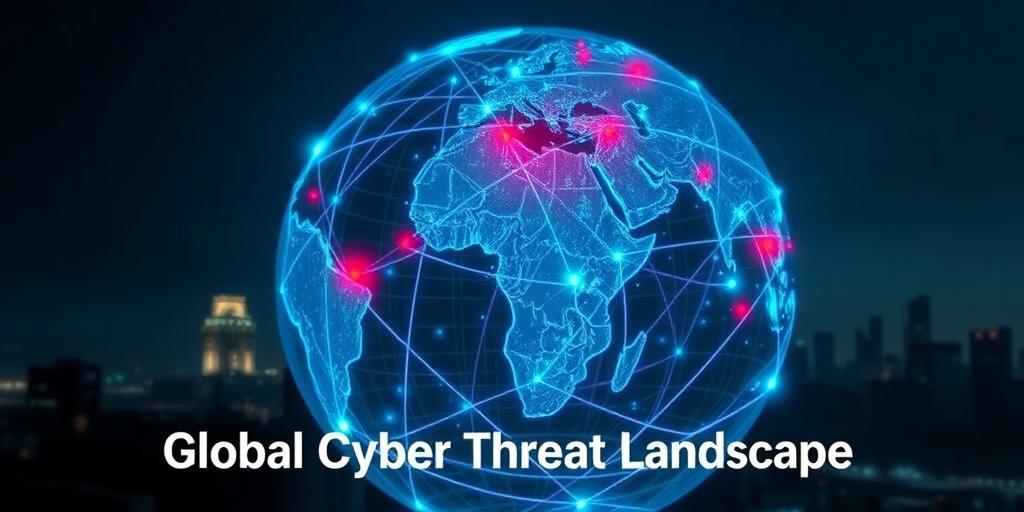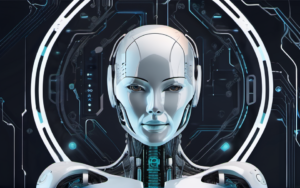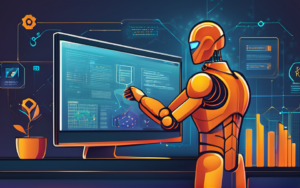The world is becoming increasingly interconnected, with businesses and individuals relying heavily on digital technologies. This reliance, however, comes with a significant downside: a constantly evolving landscape of cyber threats. These threats can take many forms, from simple phishing scams to highly sophisticated attacks targeting critical infrastructure. Understanding the nature and scope of these cyber threats is essential for safeguarding individuals, businesses, and nations.
The Evolving Cyber Threat Landscape
The cyber threat landscape is in a constant state of flux, with new threats emerging regularly. This evolution is driven by several factors, including the rise of sophisticated attacks, the growing role of nation-states in cyber warfare, and the impact of emerging technologies.
The Rise of Sophisticated Attacks
Cybercriminals are becoming increasingly sophisticated in their tactics and techniques, using advanced tools and methodologies to bypass security measures. This includes the use of artificial intelligence (AI) and machine learning (ML) to automate attacks, making them more efficient and difficult to detect.
The Growing Role of Nation-States
Nation-states are increasingly using cyberattacks as a tool for espionage, economic sabotage, and political influence. These attacks are often highly targeted and complex, with advanced capabilities and resources at their disposal.
The Impact of Emerging Technologies
Emerging technologies like the Internet of Things (IoT), cloud computing, and 5G are creating new attack surfaces and vulnerabilities. This has led to a surge in attacks targeting these technologies, such as IoT botnets and cloud data breaches.
Key Threat Actors and Their Motives
Understanding the motivations of different threat actors is crucial for developing effective cybersecurity strategies. Some of the key threat actors include:
Advanced Persistent Threats (APTs)
APTs are highly sophisticated and well-funded groups, often associated with nation-states, that engage in long-term, targeted attacks. Their motives can range from espionage to economic sabotage.
Cybercriminals
Cybercriminals are motivated by financial gain and often use malware, phishing scams, and ransomware to steal sensitive data or extort money from victims.
Hacktivists
Hacktivists are motivated by political or social causes and often use cyberattacks to disrupt online services, leak sensitive information, or raise awareness about their cause.
Insider Threats
Insider threats involve individuals with legitimate access to sensitive information or systems who misuse their privileges for malicious purposes. This can range from accidental data leaks to deliberate sabotage.
Common Cyberattack Vectors
Understanding the different ways cyberattacks are carried out is essential for building effective defenses. Some of the most common cyberattack vectors include:
Malware
Malware refers to malicious software designed to harm computer systems or steal data. This can include viruses, worms, Trojans, and ransomware.
Phishing
Phishing is a form of social engineering that involves deceiving users into revealing sensitive information like passwords or credit card details. This is often done through emails, websites, or social media messages that appear legitimate.
Ransomware
Ransomware is a type of malware that encrypts a victim’s data and demands payment for its decryption. This can be highly disruptive and costly for businesses and individuals.
Denial-of-Service (DoS) Attacks
DoS attacks aim to overwhelm a target system with traffic, making it unavailable to legitimate users. This can be used to disrupt online services, websites, or networks.
The Impact of Cyberattacks
Cyberattacks can have a significant impact on individuals, businesses, and nations, resulting in:
Financial Losses
Cyberattacks can lead to financial losses through data theft, ransomware payments, and the cost of incident response and recovery.
Data Breaches and Privacy Violations
Data breaches can expose sensitive information, leading to identity theft, fraud, and reputational damage.
Reputational Damage
Cyberattacks can damage a company’s reputation and erode customer trust, leading to lost business and revenue.
Disruption of Operations
Cyberattacks can disrupt business operations, leading to downtime, lost productivity, and service outages.
Mitigating Cyber Risks
While it’s impossible to eliminate all cyber risks, there are several steps that individuals and organizations can take to mitigate them:
Implementing Strong Security Measures
This includes using strong passwords, enabling multi-factor authentication, installing and updating security software, and regularly backing up data.
Raising Cybersecurity Awareness
Educating employees and users about common cyber threats and best practices for online safety can help reduce the risk of phishing scams and other attacks.
Building a Robust Incident Response Plan
Having a plan in place for responding to cyberattacks can help minimize damage and ensure a swift recovery. This plan should include steps for containing the attack, mitigating its impact, and restoring systems.
Collaborating with Industry Partners
Sharing information about cyber threats and best practices with other organizations can help build a stronger collective defense against cyberattacks.
The Future of Cybersecurity
The cyber threat landscape is constantly evolving, and new technologies are emerging that will continue to shape the future of cybersecurity. Some of the key trends to watch include:
Artificial Intelligence and Machine Learning
AI and ML are playing an increasingly important role in cybersecurity, being used to detect and respond to threats, automate security tasks, and improve security posture.
Quantum Computing
Quantum computing has the potential to revolutionize cybersecurity, both by enabling new attack methods and providing new defenses against existing threats.
The Internet of Things (IoT)
The growing number of connected devices creates new vulnerabilities and attack surfaces. This is leading to an increase in attacks targeting IoT devices and networks.
The Metaverse
The metaverse is a rapidly evolving technology that presents new cybersecurity challenges, including the potential for data breaches, identity theft, and virtual world attacks.
The Importance of Proactive Cybersecurity
The ever-evolving nature of cyber threats underscores the importance of a proactive approach to cybersecurity. This involves staying informed about the latest threats and vulnerabilities, implementing strong security measures, and continuously adapting to new challenges.
By understanding the global cyber threat landscape, its key actors, and its evolving nature, individuals and organizations can take the necessary steps to protect themselves against these threats and ensure a more secure digital future.




